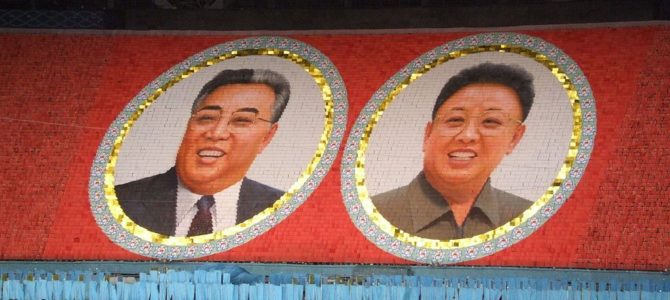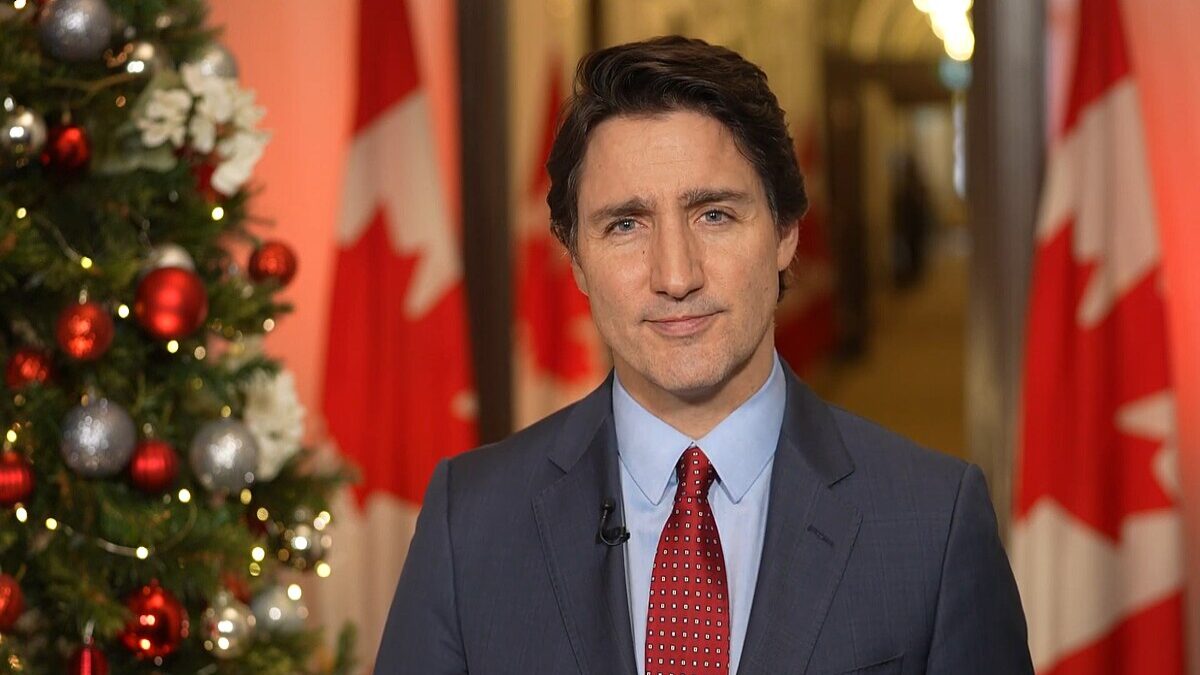
North Korea fired a ballistic missile over Japan early Tuesday morning that flew about 1,700 miles before breaking apart over the Pacific Ocean. Missile sirens blared across Japan and Tokyo issued an emergency warning to some parts of the country telling residents to shelter in place. An envoy from Pyongyang later accused the United States of driving the Korean peninsula towards “an extreme level of explosion.”
The missile appeared to be a Hwasong-12, a new intermediate-range projectile that Pyongyang recently threatened to fire towards Guam, where the United States has a large airbase. The missile fired Tuesday could have reached Guam or other American, South Korean, or Japanese bases in northeast Asia. Initial reports from the South Korean military indicate it was fired from a site near Pyongyang’s international airport, not the usual launch site in the northeast, and officials are still trying to determine what kind of missile it was.
Japanese Prime Minister Shinzo Abe told reporters that “Japan and the U.S. stances are completely matched,” after a phone call with President Trump in which the leaders discussed escalating pressure on North Korea. Abe added that he had requested an emergency meeting of the United Nations Security Council, expected to take place Tuesday afternoon, and that his government “was prepared to take all the measures to protect people’s lives.” Trump said all options are on the table.
A Long March Towards a Nuclear North Korea
Tuesday’s launch comes after Pyongyang fired three short-range missiles Saturday that flew about 155 miles to the northeast before landing in the sea. Those launches, which garnered less attention than Tuesday’s provocation, were in response to joint U.S.-South Korea war games designed to prepare for an attack by the North.
For their part, the North Koreans claim these military exercises have provoked them into launching missiles. This is balderdash. Pyongyang might not like these drills, but their existence is largely in response to North Korea’s unending pursuit of nuclear weapons and the intercontinental ballistic missiles needed to deliver them. Tuesday’s missile launch adds to the increasingly long list of evidence suggesting Kim Jong Un has no intention of curbing his nuclear and ballistic weapons programs.
Tuesday’s launch marked only the third time a North Korean projectile has flown over Japanese territory. In 1998 and 2009, the North launched what it claimed were rockets carrying satellites into orbit, both of which flew over Japan. Pyongyang made no such claim about Tuesday’s launch. Japan’s chief cabinet secretary called it “an unprecedented grave threat” and said his country would take “appropriate steps.”
Between a Rock and Hard Place
But what are the appropriate steps, and how should this change Japan’s, as well as America’s and South Korea’s, calculus regarding the rogue state? In the past couple of weeks, the United States and the UN Security Council have passed a number of new sanctions against North Korea and various other Chinese and Russian companies that do business with Pyongyang. Maybe those sanctions need some time to sink in, but so far it looks like Kim Jong Un couldn’t care less how many sanctions other countries pass against his regime. Will the United States and its allies simply call for more sanctions? If not, what’s the next step?
A prominent theory says that what the North Korean regime wants, above all else, is to remain in power and therefore it won’t do anything to seriously jeopardize its position. This has led experts and journalists to conclude that Kim Jong Un and his generals won’t go too far with their ballistic missile testing and, once they have the technology to affix nukes to the tip of a warhead (something that could occur as early as next year), they won’t use them.
This theory has made U.S. officials at times unrealistically optimistic. Before Saturday’s missile launch, Secretary of State Rex Tillerson said he was “pleased to see that the regime in Pyongyang has certainly demonstrated some level of restraint that we have not seen in the past,” and suggested the regime’s temporary pause in missile launches could be a “pathway” to dialogue. Last week at a political rally in Phoenix, Trump said his threats to strike North Korea were working, and that Kim Jong Un was “starting to respect us.”
No doubt, this is an extremely appealing theory, and it does make some sense. But then again, it can be an error to assume our calculus is the same as Kim Jong Un’s. North Korea shows no signs of simply maintaining the status quo. It is pushing rapidly toward a nuclear weapon and continually provokes its neighbors.
Pyongyang has launched a total of 18 missile tests so far this year. Kim Jong Un’s father, Kim Jong Il, only tested 16 missiles during his entire 16-year tenure as leader. Whatever the appeal of the theory that North Korea can be talked out of its bellicose behavior, today’s ballistic missile test didn’t look like the move of a country that’s ready to start negotiations or abandon its weapons programs.









